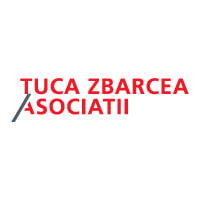

Head of legal and compliance department | Beko



Minerva Ionita
Head of legal and compliance department | Beko
Team size: Seven
How do you approach managing legal aspects during periods of instability or crises, and how does your legal strategy align with the broader business strategy to ensure the organisation’s resilience?
Managing legal aspects during periods of instability or crises requires a proactive and agile approach that must align closely with the broader business strategy. It also demands a structured approach to minimise risks and ensure compliance while maintaining business continuity. Companies now face a broad spectrum of challenges, each demanding swift and effective responses. Companies must not only be prepared but also remain agile in adapting to new challenges as they arise.
By embracing resilience, companies emerge stronger, leveraging challenges as opportunities for growth and innovation. Part of the legal team’s role is to provide real-time legal guidance on issues like contractual obligations, liability exposure, and regulatory changes; to conduct a thorough risk assessment to identify potential legal threats. Of course, the legal risk assessment should directly support business continuity plans, and legal teams should work with business units to prepare contingency plans that minimise disruption.
Anticipating legal risks helps the business to remain operational during crises by ensuring that key agreements are enforceable, compliance obligations are met, and reputational damage is minimised. In times of crisis, legal disputes often arise, hence legal teams should work to resolve these disputes through negotiation or alternative dispute resolution methods to avoid lengthy and expensive litigation.
A flexible and pragmatic legal approach allows the business to continue operations without being bogged down by legal disputes, which can drain both financial and managerial resources. Effective communication is an important pillar of crisis management. Ensuring compliance and maintaining transparent communication builds trust and prevents reputational or legal damage that can undermine the organisation’s resilience. During instability, businesses often face legal challenges related to workforce management. Legal teams should guide the business on labour law compliance, employee communication, and potential disputes. Aligning the legal approach with HR and business strategy ensures workforce restructuring is handled smoothly while maintaining morale and avoiding litigation. Ensuring that the organisation treats employees fairly and in accordance with the law preserves workforce loyalty and avoids costly legal battles that could drain resources during crises.
In summary, a legal strategy during periods of instability or crisis must be adaptive, deeply integrated with the overall business strategy, and focused on proactive risk management. This ensures that legal decisions not only protect the organisation from immediate harm but also contribute to its long-term resilience by maintaining operational continuity, protecting stakeholders, and minimising financial or reputational damage.
What emerging technologies do you see as having the most significant impact on the legal profession in the near future, and how do you stay updated on these developments?
This is an incredibly sensitive and current topic. Technology is beginning to have a profound impact on the legal profession. These innovations are transforming the way legal services are delivered, enhancing efficiency, and presenting both new challenges and opportunities for legal practitioners.
Artificial Intelligence (AI) is revolutionising many aspects of legal practice. In areas like document review, legal research, contract analysis, and drafting, AI is already making a significant difference. AI-driven platforms can analyse legal cases and suggest relevant precedents, statutes, and legal opinions, reducing the time spent on research. Additionally, AI tools are automating the review and drafting of contracts, identifying clauses, risks, and inconsistencies, which saves valuable time for legal teams. Recently, I’ve also come across virtual reality (VR) and augmented reality (AR), technologies that are likely to have a profound influence on the profession. VR and AR are starting to find applications in legal education and courtroom proceedings. VR, for example, can simulate courtroom environments, offering legal trainees an immersive, hands-on experience that traditional methods can’t match. In litigation, AR can be used to recreate crime scenes or accident sites, allowing judges and juries to experience these scenarios interactively, enhancing their understanding and engagement.
All of these developments are fascinating, and it’s clear that they will bring significant benefits to the legal field. One easy way to stay updated with these advancements is by subscribing to legal tech news, joining legal innovation communities, and attending legal tech conferences. However, it’s important to note that while staying informed about these developments is crucial, implementing and fully benefiting from these technologies is a whole different challenge. I believe it will take several more years before the majority of professionals are able to effectively integrate and utilise these technologies.
Legal and compliance manager | Arctic
What are the most important transactions and litigations that you have been involved in during the last two years? An important project is WEEE management (waste electrical and electronic management)....
Legal team leader | Arctic
Starting her legal profession at a private practice, Minerva Ionita had plans to cultivate her professional expertise and for this reason chose to work for a multinational company when joining...